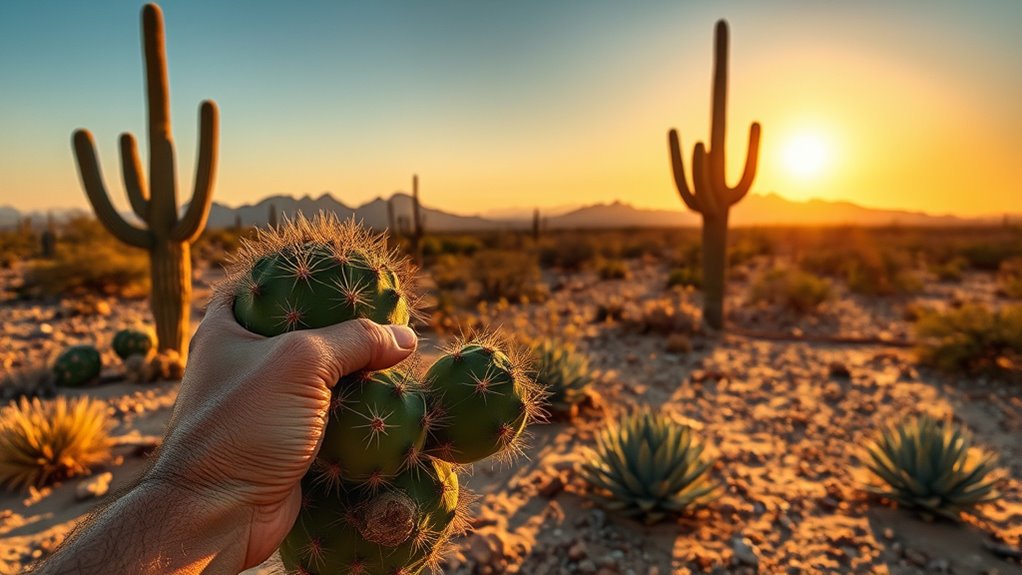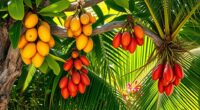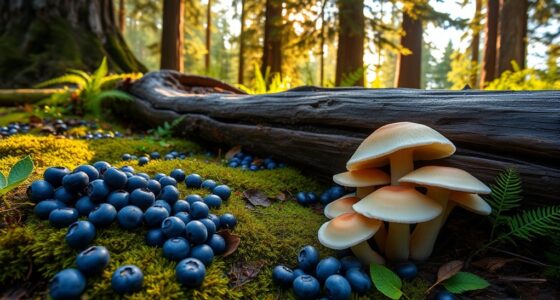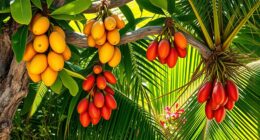In a desert survival situation, you can rely on plants like prickly pear cacti, mesquite pods, and native nuts for nourishment. Carefully identify these edibles by looking for specific features like pads, fruit color, and plant growth patterns, always respecting the environment. Use traditional techniques to harvest safely, wearing gloves and tools. Recognize water clues near lush vegetation, and learn how native cultures use these plants for food and tools. Continuing will help you master safe foraging techniques.
Key Takeaways
- Identify edible desert plants like prickly pear, mesquite, and pinyon pine, ensuring proper recognition and sustainable harvesting.
- Use plant features and traditional knowledge to safely harvest and prepare desert flora for nutrition.
- Understand the cultural significance of plants such as saguaro and cholla in indigenous diets and practices.
- Utilize desert plants like yucca and juniper for tools, soap, ropes, and fire-starting materials.
- Locate water sources by spotting lush plants near dry rivers, indicating underground moisture and safe foraging zones.
Edible Desert Plants: Nature’s Nutritious Offerings
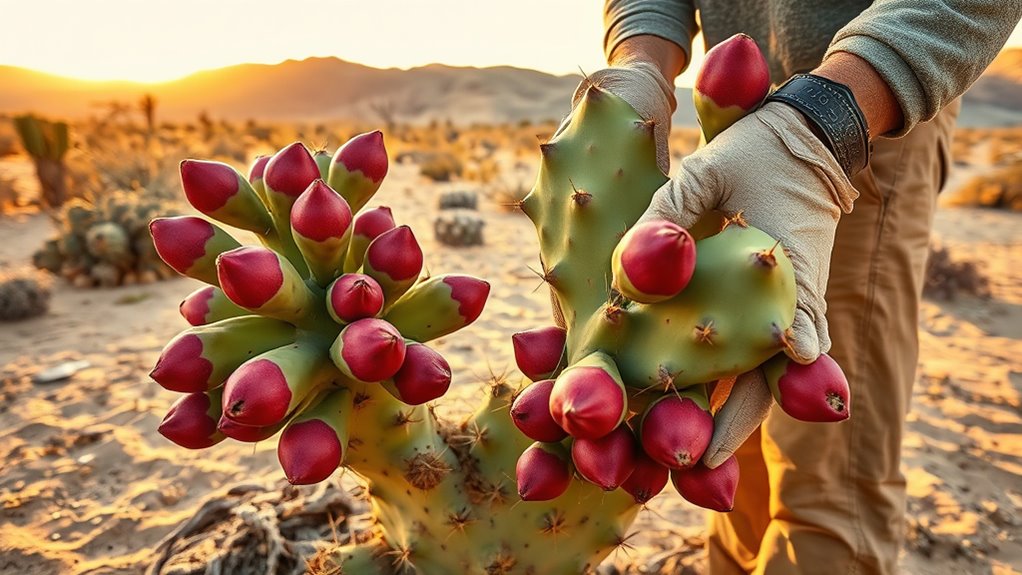
Many desert plants provide essential nutrition through their edible parts, making them valuable resources for survival. These Wild Edibles include desert plants like prickly pear cacti and mesquite, which produce tasty fruits, seeds, or pads. Prickly pear pads can be cooked or fried, offering a nutritious meal, while their sweet fruits contain seeds rich in antioxidants. Mesquite pods are highly versatile; you can grind them into flour for high-protein, carbohydrate-rich foods. Pinyon pine seeds, or pine nuts, are dense in calories and have supported indigenous diets for generations. Proper identification and respectful harvesting are vital to safely enjoy these natural treasures. Additionally, understanding edible desert plants is crucial for safe foraging and ensuring the sustainability of these natural resources. Recognizing safe harvesting techniques helps prevent injury from plant spines or toxins while gathering these foods. Learning about plant toxins and safety is also essential to avoid accidental poisoning. Furthermore, learning about the nutritive value of these plants can enhance their use in survival situations. Being aware of the seasonal availability of these plants can improve foraging success and reduce environmental impact.
How to Safely Identify and Harvest Desert Edibles
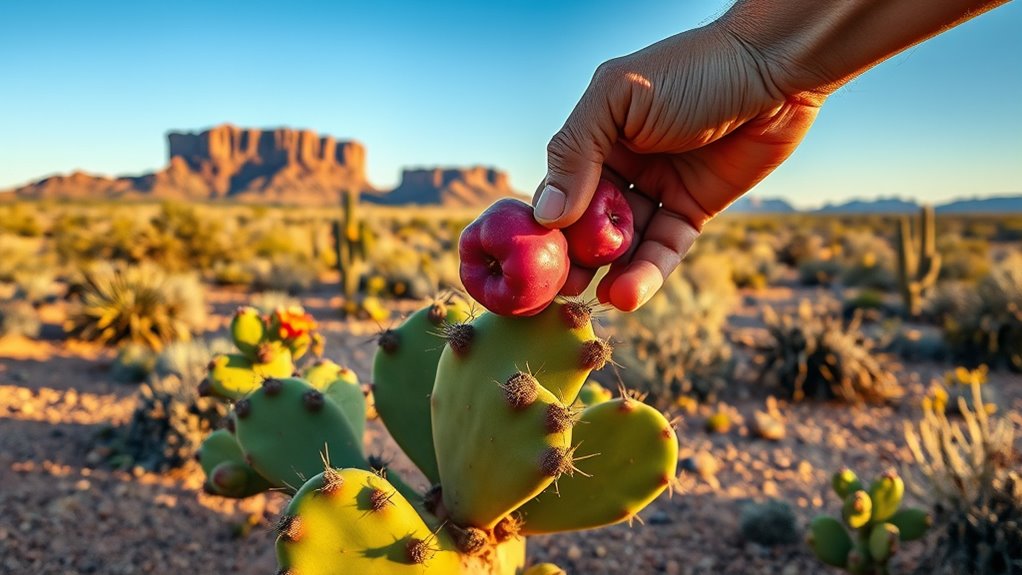
How can you guarantee you’re correctly identifying and safely harvesting desert edible plants? Start with solid plant identification by noting features like leaf shape, flower color, and growth patterns. This helps you distinguish edible desert plants from toxic look-alikes. Always harvest from healthy, undamaged plants, and avoid overharvesting to preserve the environment. Use gloves and tongs when handling spiny or toxic plants to prevent injuries. Research or consult reliable guides before collecting, ensuring you understand the plant’s edibility and traditional harvesting methods. Understanding the local ecosystem can help you identify which plants are native and safe to consume, further ensuring your safety while sustainably gathering desert edibles for your survival or culinary needs. Additionally, being aware of personal vibration and emotional alignment can support a mindful approach to foraging, promoting a respectful connection with nature. Maintaining respectful and ethical foraging practices ensures the sustainability of desert resources and preserves the natural balance. Respect private property and local regulations by seeking permission when foraging on private land or protected areas.
Traditional Uses and Cultural Significance of Desert Flora
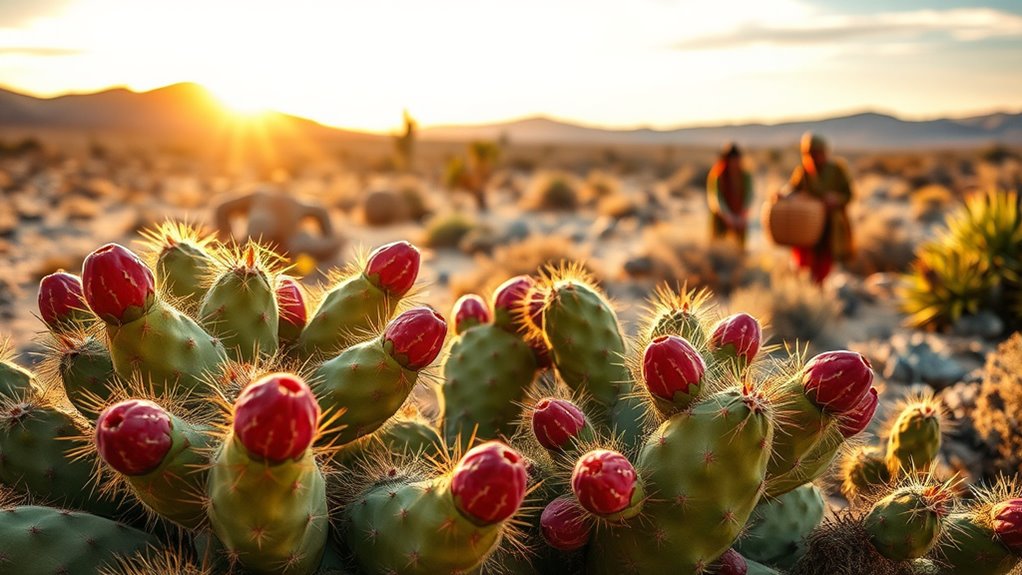
Desert plants hold deep cultural significance for indigenous communities like the O’odham, Southern Paiute, and Puebloan tribes, who have relied on them for centuries. Native peoples utilize desert flora for traditional uses such as food, medicine, and crafting materials. For example, saguaro fruits, cholla buds, and mesquite pods provide sustenance and are integral to cultural practices. These plants also serve as resources for tools, textiles, and ceremonial objects, reflecting their importance beyond nutrition. Respectful harvesting techniques—timed to seasons and methods—ensure sustainable use and conservation. Knowledge of desert plants’ traditional uses is passed down through generations, strengthening cultural identity and survival. Recognizing this cultural significance fosters appreciation for indigenous land stewardship and promotes respectful foraging practices today.
Plants as Tools and Survival Resources in Arid Environments
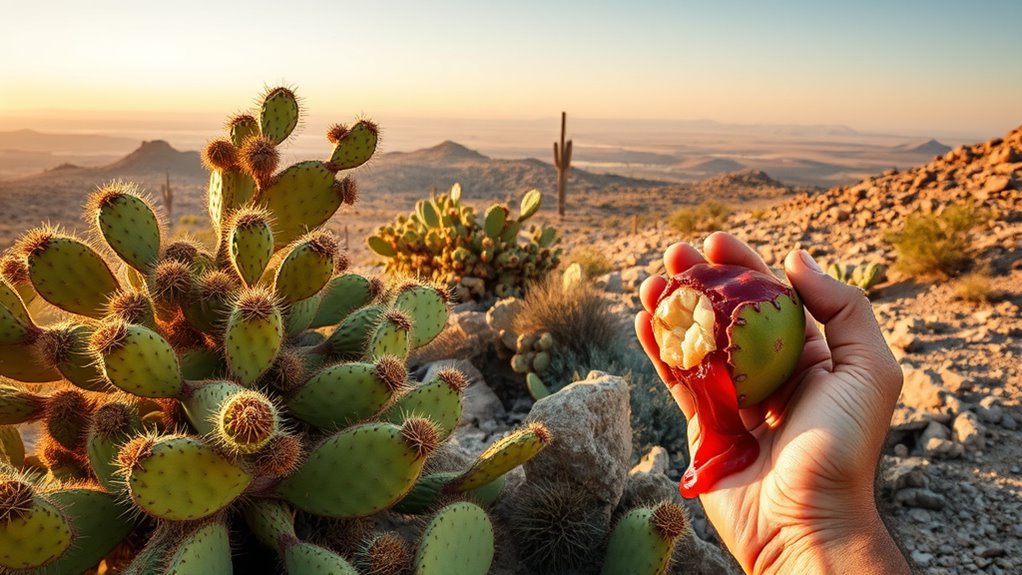
Indigenous communities have long harnessed desert plants as essential tools for survival, transforming native flora into practical resources. In arid environments, desert plants like yucca and juniper provide vital survival tools. Yucca roots can be processed into soap for cleaning, while its fibers are useful for making rope, nets, and baskets. The fiber strength of yucca makes it especially valuable for crafting durable items. Juniper wood is lightweight and durable, making it ideal for crafting tools, fire starters, and shelter components. Additionally, the pitch from pinyon pine and juniper serves as a primitive adhesive or sealant, helping with repairs and crafting. Many desert plants produce materials crucial for fire-starting, shelter building, and crafting, enabling you to adapt and thrive in harsh arid environments. The drought-resistant nature of these plants allows them to survive in extreme conditions, making them reliable resources for survival and practical tool-making. Understanding the plant properties of desert flora can further enhance their effective use in survival situations.
Recognizing Water Indicators and Ensuring Safe Foraging
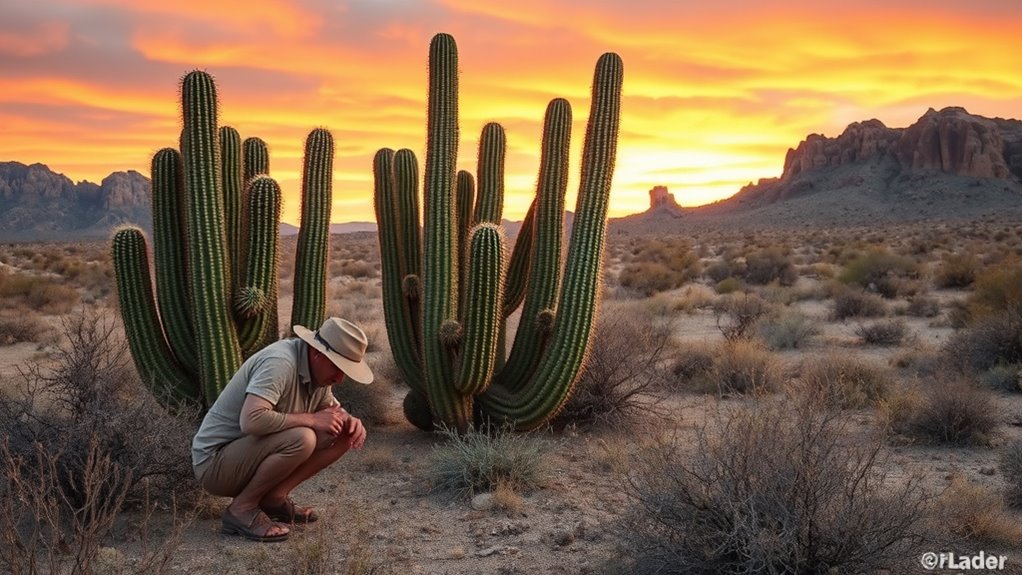
Many water sources in arid environments can be identified by the plants that grow nearby, such as willows, cottonwoods, and desert fan palms. These desert plants serve as water indicators, guiding you to underground sources essential for safe foraging. To effectively recognize water indicators, consider these tips:
Look for lush desert plants like willows and cottonwoods to find underground water sources in arid areas.
- Look for lush, green desert plants that thrive in moist areas, especially near dry riverbeds.
- Observe the seasonal growth patterns of water-associated plants to target water-rich zones.
- Identify distinctive features of desert flora that typically grow in moist environments.
- Be cautious of misidentifying plants; only trust those known as safe foraging and water indicators.
Frequently Asked Questions
What Adaptations Do Cacti Have to Survive in the Desert?
You might wonder how cacti survive harsh desert conditions. They’ve adapted with thick, fleshy stems that store water, and spines instead of leaves to minimize water loss and deter animals. Their waxy coating reduces evaporation, while their shallow roots quickly absorb rainwater. Plus, their CAM photosynthesis lets them open stomata at night, conserving water. These features work together, helping cacti endure extreme droughts and intense sunlight.
Which Trait Gives the Cactus a Better Chance of Survival in a Desert Than in a Rainforest?
You might wonder which trait helps cacti survive better in deserts than rainforests. It’s their ability to perform CAM photosynthesis, opening stomata at night to reduce water loss. This adaptation is vital in arid environments where water is scarce. Unlike rainforest plants, cacti can conserve moisture by limiting transpiration during hot days, giving them a distinct survival advantage in deserts, where water conservation is essential.
Why Are Cacti Well Suited for a Desert Ecosystem?
You might wonder why cacti thrive in deserts. Their thick, fleshy stems store water, allowing them to survive long dry spells. Spines reduce water loss and protect from animals. They perform CAM photosynthesis, opening stomata at night to conserve moisture. Their deep or widespread roots quickly absorb scarce rain. These adaptations help cacti withstand extreme heat and drought, making them perfectly suited for harsh desert environments.
Does the Thick Stem of a Cactus Helps It Survive in the Desert?
Think of the cactus’s thick stem as a desert’s reservoir of life. It helps you survive by storing water during droughts, like a hidden treasure chest. The waxy coating and reduced surface area act as a shield, keeping water in. Spines provide shade and reduce water loss, making the cactus resilient. This sturdy stem is your survival anchor, ensuring you endure the harsh desert environment.
Conclusion
By learning to identify and safely harvest desert plants, you open a crucial survival skill. Did you know that some cacti can provide up to 90% of your water needs in an emergency? With knowledge of edible flora and water indicators, you can confidently navigate arid environments. Embrace desert foraging, and you’ll discover that nature offers more nourishment and resilience than you might expect, turning harsh landscapes into sources of sustenance.

